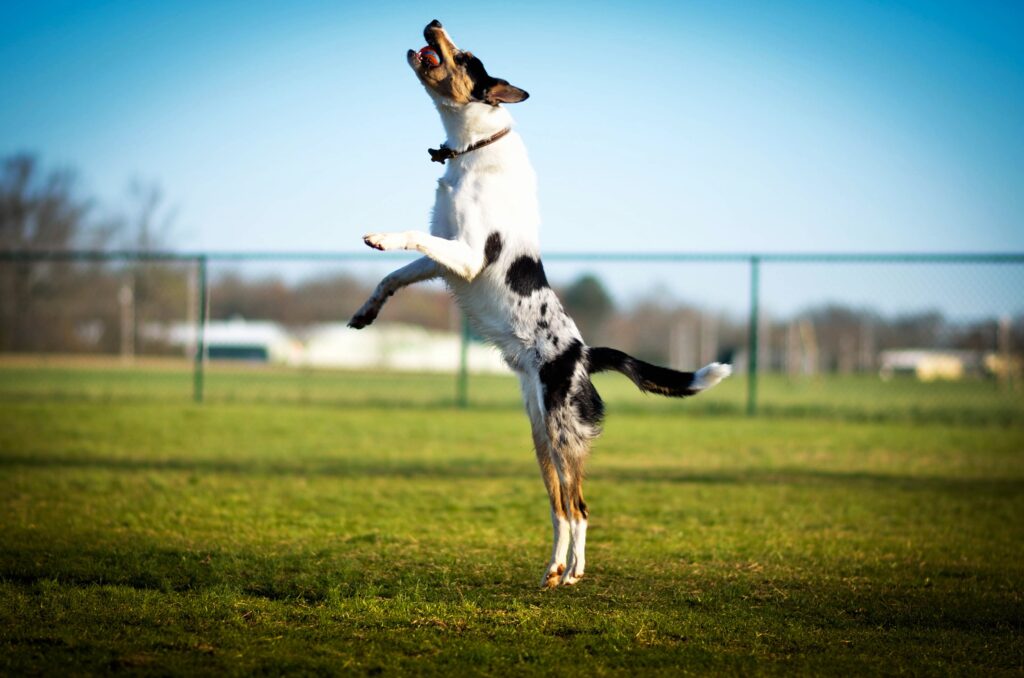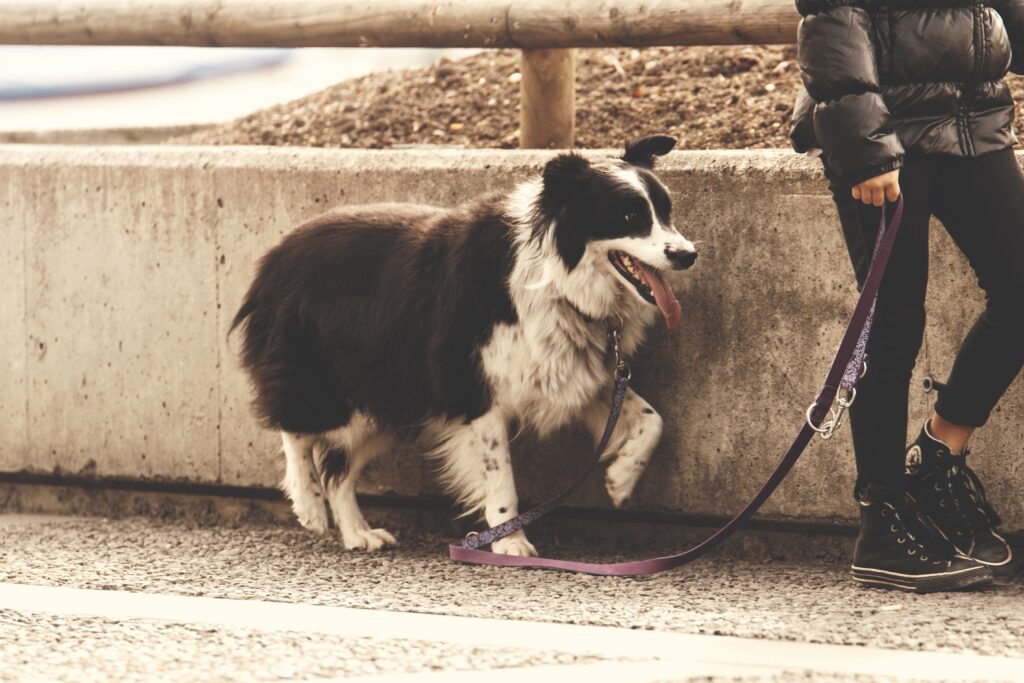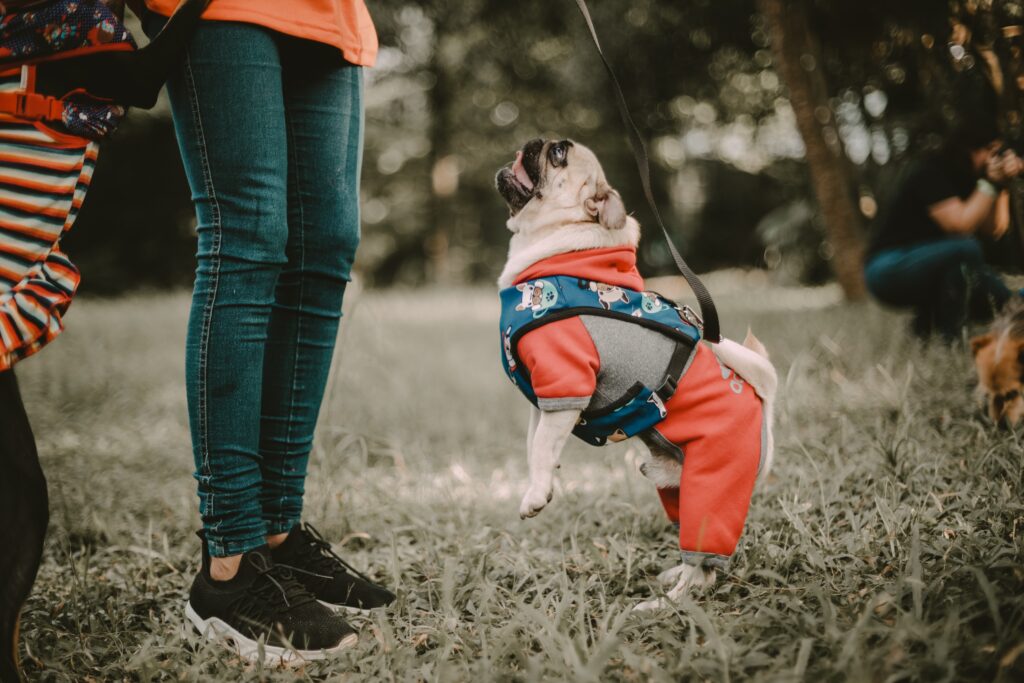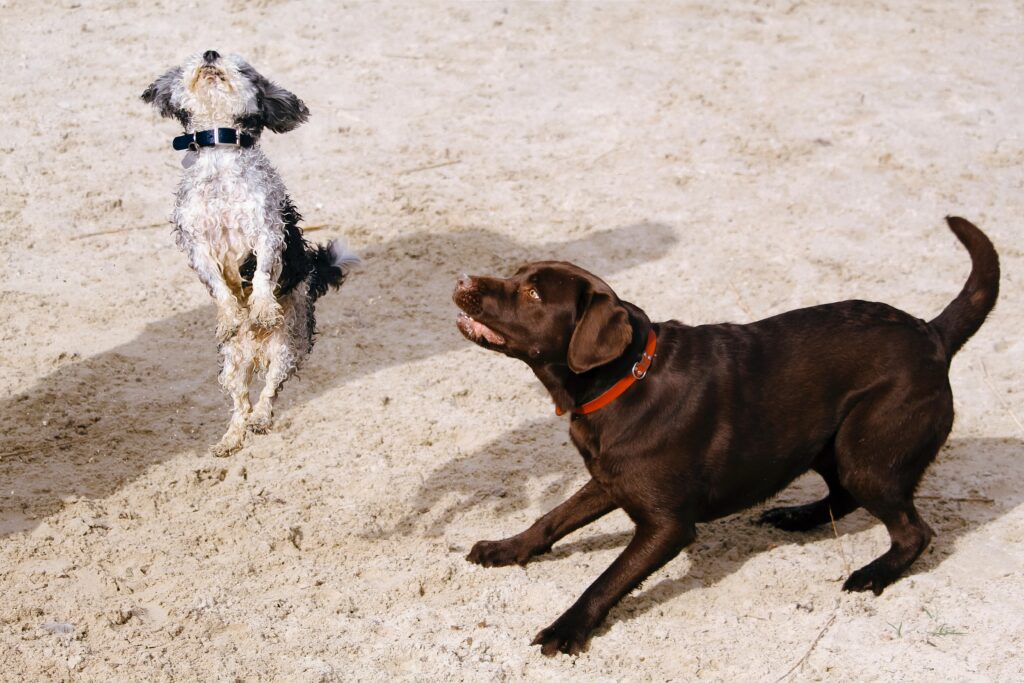Establishing Basic Training Principles, Uplifting feedback, Preparing for Training, Consistency are some of the methods on ‘How to Train a Dog Not to Jump’. GET A DETAILED LOOK BELOW!
Dogs are known for their enthusiastic greetings and playful nature, however, in some cases their jumping conduct can become overwhelming or even possibly risky. It’s essential to prepare your dog not to jump to guarantee their security as well as the comfort of the people around them. In this article, we will investigate viable procedures and systems to show your shaggy companion how not to jump on others and display more advantageous ways of behaving.
Understanding the Jumping Behavior in Dogs
Jumping is a characteristic way of behaving for Dogs. Pups often jump to welcome their proprietors or express excitement. However, as dogs become older and bigger, their jumping can turn out to be more hazardous. Dogs might hop on individuals, furniture, or even ledges, which can be troublesome and cause harm. Understanding the purposes for your Dog Jumping conduct is the most vital move toward addressing to and altering it.
The Importance of Training a Dog Not to Jump
Preparing your dog not to jump is fundamental because of multiple factors. It, right off the bat, prevents accidental wounds to both the dog and the people they engage with. An enormous or excessively energized dog can incidentally wreck somebody or scratch them with their paws. Besides, showing your dog appropriate habits adds to their general submission and discipline, improving their relationship with you and others. In conclusion, a respectful dog is bound to be invited into different group environments, making excursions and get-togethers more charming for all interested parties.
Establishing Basic Training Principles
Prior to plunging into the particular procedures for preparing a dog not to jump, laying out a strong foundation of essential preparation principles is vital. These standards will direct you all through the preparation interaction and guarantee predictable advancement.
Uplifting feedback
Uplifting feedback is the foundation of powerful dog preparation. It includes compensating wanted ways of behaving as opposed to punishing undesirable ones. At the point when your dog exhibits appropriate behavior, for example, remaining mentally collected or keeping each of the four paws on the ground, reward them with treats, praise, or playtime. This positive affiliation urges them to repeat the ideal conduct from here on out.
Consistency
Consistency is key while preparing your dog not to jump or any other behavioral teaching. Lay out clear guidelines and limits, and guarantee that everybody in the family follows them reliably. Dogs thrive with routine and consistency, so keeping a steady preparation approach will yield improved results.
Persistence
Preparing a dog takes time and patience. It’s essential that dogs learn at their own speed. Be patient and understanding, and abstain from getting disappointed or turning to discipline. Uplifting feedback and reliable practice will yield the best outcomes in preparing your dog not to jump.

Preparing for Training
Prior to beginning the preparation cycle, it’s fundamental to accumulate vital supplies and make a preparation plan. Here are some moves to assist you with planning:
Gather Fundamental Supplies
Gather the accompanying supplies to help with the preparation cycle:
Treats: Utilize little, hasty treats as rewards for your dog’s acceptable conduct.
Leash: A leash will assist you with controlling your dog’s development during instructional courses.
Clicker (optional): A clicker can be utilized as a marker to build up wanted ways of behaving.
Make a Preparation Timetable
Consistency is pivotal in preparing, so lay out a normal preparation plan. Devote short, engaged instructional meetings of around 10-15 minutes every day. This reliable practice will support the ideal ways of behaving and assist your dog with understanding what is generally expected of them.
Educating the “Off” Command
The “Off” order is an essential sign that helps your dog to keep each of the four paws on the ground. Here is a bit-by-bit guide on the most proficient method to show this order successfully:

Stage 1: Leash Training
Begin by joining a leash to your dog’s choker or bridle. This will furnish you with better control during preparation and keep your dog from jumping excessively high or lunging forward.
Step 2: Distraction Technique
Have a treat in your hand and hold it at your dog’s nose level. Gradually drop the treat down toward the ground while at the same time saying “Off” in a clear, firm tone. As your dog follows the treat with their eyes and sniffs it, it will normally bring down its front paws to arrive at it.
Stage 3: Reinforcement and Repetition
When your dog’s front paws contact the ground, reward them with praise and a treat. Repeat this exercise on various occasions during each instructional meeting, progressively decreasing the bait of the treat and depending to a greater degree on the verbal order. Over the long run, your dog will relate the “Off” order with keeping their paws on the ground.
Diverting the Jumping Behavior
As well as educating the “Off” order, diverting your dog’s jumping conduct toward additional suitable actions is significant. Here is a step-by-step approach:
Stage 1: Ignore and Turn Away
At the point when your dog leaps on you or others, dismiss your body from them and abstain from visually connecting or offering them consideration. Folding your arms and staying still will convey that jumping doesn’t get the ideal reaction.
Step 2: Reward Desired Behavior
When your dog quits jumping and keeps every one of the four paws on the ground, reward them with commendation, treats, or petting. This supports the positive way of behaving and urges them to repeat it later on.
Step 3: Teaching Alternative Behaviors
Divert your dog’s jumping energy into additional fitting activities, like sitting or offering a paw for a handshake. Show them these elective ways of behaving and reward them when they perform them as opposed to jumping. This furnishes your dog with a source of their energy and sidetracks their concentration.
Addressing Excitement and Impulse Control
Jumping is many times a consequence of excitement and lack of impulse control. By showing your dog essential orders and upgrading their impulse control, you can diminish their jumping way of behaving. Follow these steps:

Step 1: Teaching Sit and Stay Commands
Train your dog to sit and remain on order. Utilize uplifting feedback and prizes to urge them to stay cool and made. Practice these commands in various environments, gradually introducing distractions to enhance their impulse control.
Step 2: Gradually Introduce Distractions
When your dog has dominated the sit and remain orders in a controlled climate, begin presenting interruptions continuously. For instance, have a relative or companion approach while your dog remains in a sitting position. On the off chance that your dog stays cool and doesn’t hop, reward them with applause and treats.
Step 3: Consistent Practice and Reinforcement
Consistency is essential in building up appropriate conduct and improving impulse control. Practice the sit and remain orders routinely, presenting your dog with various situations and interruptions. Over the long run, they will figure out how to control their excitement and abstain from jumping.
Preventing Jumping with Visitors
When guests come to your house, it’s essential to prevent jumping on them and show your dog proper behavior. Here’s how to handle greetings:
Step 1: Informing Guests
Before visitors show up, inform them about your dog’s jumping way of behaving and demand their collaboration in not encouraging it. Teaching guests about your training efforts will assist with establishing a controlled climate.
Step 2: Controlled Greetings
At the point when visitors enter, have your dog on a leash to keep up with control. Request that your visitors disregard your dog until they are quiet and have each of the four paws on the ground. When your dog is composed, permit them to serenely approach and welcome your visitors.
Step 3: Reinforce Calm Behavior
Reward your dog for the calm way of behaving during good tidings. Praise and treat them when they approach visitors calmly and refrain from jumping. Reliably building up this positive conduct will assist your canine with understanding the proper method to greet your guests.
Troubleshooting Challenges
Preparing a dog not to jump can introduce difficulties along the way. The following are a couple of tips to defeat them:
Consistency and Persistence
Consistency is key in canine preparation. Guarantee that everybody in your family adheres to similar guidelines and preparing methods. Persistence is likewise fundamental, as it might require investment for your dog to understand the idea of not jumping completely. Remain patient, steady, and persistent in your preparation endeavors.
Seeking Professional Help
In the event that you’re confronting huge difficulties or your canine’s hopping conduct endures regardless of predictable preparation, think about looking for help from an expert canine coach or behaviorist. They can give customized direction and address any hidden issues adding to the bouncing way of behaving.
Conclusion
Preparing your dog not to jump is a significant part of their general obedience and well-being. By understanding the purposes for their hopping conduct and carrying out uplifting feedback procedures, you can successfully help your dog to keep each of the four paws on the ground. Make sure to show restraint, steady, and give customary instructional courses to support the ideal way of behaving.
FAQs
Q: Why do dogs jump on people?
A: Dogs might hop on individuals to welcome them, show excitement, or look for consideration. It’s a characteristic way of behaving, yet it tends to change through training.
Q: What should I do if my dog jumps on furniture?
A: In the event that your dog leaps on furnishings, discourage them by diverting them to their assigned resting region or furnishing them with an alternative comfortable space.
Q: Can I use punishment to stop my dog from jumping?
A: Punishment isn’t suggested, as it can create fear and nervousness in your dog. Uplifting feedback and redirection methods are more viable and sympathetic.



